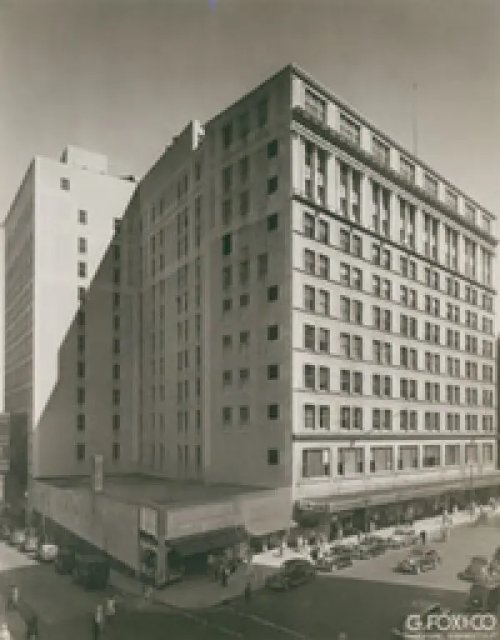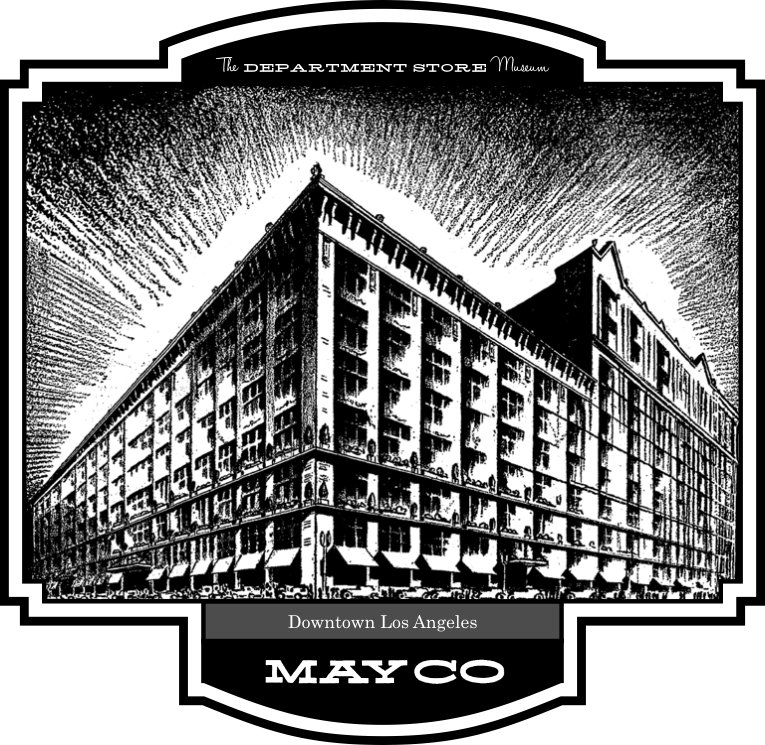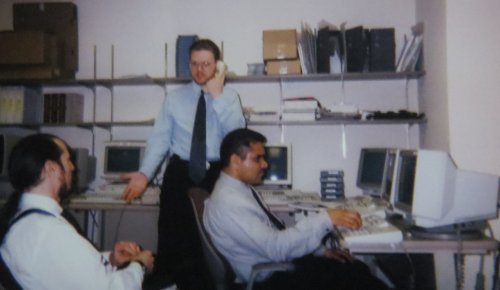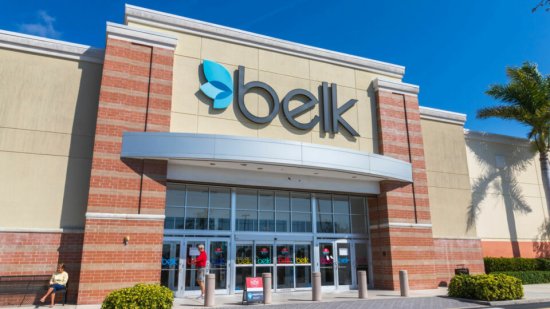As soon as the AdDept system at Macy’s in New York (described here) was running reasonably well, the May Department Stores Company became the most attractive marketing target for the system. The largest advertiser (at least in newspapers) in central … Continue reading
As soon as the AdDept system at Macy’s in New York (described here) was running reasonably well, the May Department Stores Company became the most attractive marketing target for the system. The largest advertiser (at least in newspapers) in central Connecticut was—by far—G. Fox, a traditional department store similar to Macy’s that was based in Hartford. They even had a store that was within walking distance of our new house in Enfield.1 I was well aware that G.Fox was part of the May Company and that the May Company was largely responsible for the development of the mall.
I had purchased a book from somewhere that contained marketing information on large retailers. In it I learned that the May Company, which had been in business since 1877, operated the following divisions in 1989:
- G. Fox & Co. based in Hartford.
- The Hecht Company with headquarters in Arlington, VA.
- Filene’s, a former Federated division based in Boston.
- Foley’s, a former Federated division based in Houston.
- Kaufmann’s in Pittsburgh.
- Famous-Barr in St. Louis
- J. W. Robinson Co. in Los Angeles.
- May California in Los Angeles.
- May D&F in Denver.
- May Ohio in Cleveland.
- Lord & Taylor in New York.
- Meier & Frank in Portland, OR.
- Venture, a chain of discount stores based in O’Fallon, MO.
- Payless, a chain of shoe stores based in Miami.
That’s fourteen independently run divisions that were, except for maybe the last one or two, good prospects for the AdDept system. I figured that if we could persuade the parent company to commit to using AdDept in all of its divisions, TSI would be set for life. Maybe they would even buy us! That was the way that small software companies thought (and dreamed) in the late eighties.
In fact, the May Company during that period was busy acquiring other department stores, and that attitude put a lot of stress on the advertising departments of the divisions that acquired the new stores. There is no doubt that the May Company’s acquisition of thirteen Thalhimer’s stores in 1992 was the impetus for Hecht’s to purchase the AdDept system that year.2 Hecht’s advertising department had been using a PC-based system for producing corporate reports. It was completely incapable of handling the extra load. Similarly, when May D&F was folded into Foley’s in 1993, the Houston division suddenly was facing a greatly increased workload. That caused them to call TSI for help, and we installed an AdDept system for them.3 Capacity was never an issue for AdDept; we always proposed hardware near the lowest end of the available AS/400 models. If a client outgrew its hardware, it could migrate to a more powerful model.
In 1993 G. Fox was absorbed by the Filene’s division. Having a pretty good idea of the problems that this would cause for the advertising department of Filene’s, we tried to interest them in using AdDept. However, for reasons that I have never completely understood, we were unable to get our foot in that door for many years. Filene’s advertising department never took advantage of a significant portion of the system productively enough that we were able to use them as a reference.4
Instead, our third May Company installation was at Lord & Taylor5, where I learned that L&T did not play by the same rules as the other divisions. In some ways that caused headaches; in other ways it was delightful.
Doug Pease: In 1993 Sue and I hired Doug Pease to handle our marketing. One of the primary reasons that we selected him was because he had formerly worked in G. Fox’s advertising department in Hartford. He was looking for a job because the G. Fox stores had been converted to the Filene’s logo, and the advertising for those stores was planned and purchased from the office in Boston. Doug was quite familiar with the work flow of an advertising department that was similar to the ones that TSI was targeting, and he also had some contacts in the industry. Our hope was that he could grab the brass ring of the May Company for us while I was busy trying to get the systems for the three divisions—and a few other retailers—that we had sold up and running.
This was a very important time for TSI. My image of those days resembles a hockey stick. Until that time TSI had experienced rather flat earnings. We were basically just getting by. By contrast, in the last seven years of the twentieth century we had as much work as we could handle, and our financial statements were much better.
Unfortunately, I have almost no notes for that entire period. I talked with Doug on a regular basis, but my focus was on the current installations. I depended on him to establish a relationship with prospective customers. As soon as we hired him we did a mailing to prospective customers, and Doug took to the phones. He talked with several people at the May Company.
The main liaison person between the May Company and the advertising departments of its divisions was named Fred Christen. I never heard anyone say a bad word about him. He had, of course, heard about our work at our three installations, and he seemed to be impressed.
I am pretty sure that we had another “guardian angel” at the corporate headquarters. I often seemed to be at an advertising department at a division at the same time as a corporate auditor whose first name was Linus. His job was to assess the way that divisions were reporting their advertising expenses and income from co-op programs for their vendors. He seemed to be impressed with the way that AdDept handled these things.
Fred Christen left the May Company shortly after Doug arrived at TSI. I heard that Fred left to manage his family’s business. Doug established a relationship with Fred’s successor, Dennis Wallace. I am pretty sure that Doug made at least one trip to St. Louis, but I don’t remember the details. At any rate, at some point the May Company decided that AdDept should be installed in all of the department store divisions. At that point Robinsons and May California had merged, May D&F had been folded into Foley’s, Kaufmann’s had taken over the May Ohio stores6, and the May Company had divested the Venture stores. So, we learned about five new clients in one swell foop: Famous-Barr7, Filene’s, Meier & Frank, Robinsons-May, and Kaufmann’s.
In retrospect I find it rather incredible that I have so little recollection of the details of how or when this decision came about. It was definitely a momentous occasion for TSI, but I remember no fanfare or celebration at all. I don’t think that the deal was finalized until 1996 or 1997. In the interim I installed quite a few AdDept systems at other retailers.
Employees at the May Company treated us fairly from day one right up until the time that the company was purchased by Federated in 2006. Most of TSI’s dealings with the May Company were at the division level. The following is a summary of my notes of our dealings with the corporate entity after all of the systems had been installed.
Notes: The first note that I have is dated October 18, 1999. It makes reference to a “sales tax fiasco”. I think that this must be about whether it was necessary to charge sales tax on our software and services. Because all of our AdDept clients were in other states, we were generally able to avoid doing so. However, there is an Excel file with a similar date that lists three invoices for Robinsons-May, which was in California, and three for Filene’s, which was in Massachusetts. Massachusetts and Connecticut had an agreement by which each collected taxes for the other. So, we definitely needed to charge Filene’s tax.
We also had a problem with California. TSI’s second accountant, whose name I do not remember, was hired in the early days of the AdDept system. She advised us to register with every state in which we had clients. This was poor advice, and we changed accountants shortly after that. However, there is no way to take back a company’s registration.
I vaguely remember an issue from several years earlier that involved an arrangement that my partner (and later wife) Sue Comparetto had made with Gottschalks, another store in California. In this case, the invoices were probably sent to St. Louis and paid by the May Company. We had never registered in Missouri, and we never paid sales tax there.
On January 2 of 2000 I wrote the following email to my other partner, Denise Bessette:
I think that we need to get something established as soon as possible with the May Co. to get compensated for your time and mine. Do you have any suggestions? I also think that it might be time for one or both of us of us to go to St. Louis and talk turkey with them. I am serious about this. I really am tired of not knowing where we stand.
I found a six-page document dated February 7, 2001. It concerned the specs for a Planning System Interface. Evidently they had an application called WD that they wanted to feed. They provided me with a document describing the system that had at least sixty-seven pages. Evidently we had been talking about this for at least two years. The document lists my questions and their incredibly vague responses. No one could conceivably quote an interface based on the responses that we received. I only vaguely remember this whole process. “WD” sounds familiar, but I am pretty certain that we never quoted it, much less coded it.
Denise and I went to visit the May Company together, but I think that it was in 2002. I went to St. Louis in 2001 to install AdDept for use by Filene’s on an AS/400 in the Midwest Data Center. I stayed in the Adam’s Mark Hotel. I did not like where they told me to stay. This is what I wrote to Denise.
My hotel room in St. Louis is absurd. It is a huge suite. I located a microwave and refrigerator inside what looked like a chest of some kind. For some reason it is much easier to find these two features in places where it is impossible to buy food (because I am downtown). The bathroom is right by the door, about a quarter mile from the bed. There are two TV sets, but no Jacuzzi, at least not in the room. The thermostat is out of whack. You have to set it to nearly 80 to keep the room from being frigid. I fear that they may not offer free breakfast here. They did not mention anything when I checked in.
It is supposed to rain all day here. There may even be thunderstorms. I was too lazy to run on Sunday. I will probably regret it today.
I hope that the May Co. has a comfortable nap room. I have become quite accustomed to the two-hour post-breakfast naps.
I remember that room and the rain much better than I remember what I did at the May Company. On subsequent visits I stayed at a nearby Hampton Inn. Incidentally, more than two decades later I still take lots of naps.
I found an agenda for a meeting with the May Company dated August of 2002. This must be the trip that Denise and I took together. Here it is:
- TSI
- People
- History
- Founded in 1979.
- Advertising in 1981
- Retail in 1988.
- First May division (Hecht’s) in 1991
- Custom programming
- Good at diagnosis.
- Incredibly efficient system of delivering custom code using BASIC.
- Two principles:
- There should be one version of the truth;
- Everyone should be able to take advantage of work done by others.
- People capable of completing difficult projects within parameters.
- AdDept
- Intent
- All administrative aspects.
- All media.
- Easily customizable.
- Require a minimum of local support — AS/400.
- Retail advertising is difficult.
- All the difficulties of retail — stores, merchants, accounting, A/P, and co-op
- All the difficulties of advertising
- Multiple media, each with almost completely different structure
- Media scheduling, production scheduling, estimating, loan room, etc.
- System design
- Scheduling:
- Every media represented in the ad file.
- Open on-line database works best when each person updates the system with information as soon as it is available.
- One main program, many well-normalized files.
- History of significant changes:
- Production.
- Financial.
- Financial:
- One main set of files (header and detail).
- Many front ends with supporting detail files.
- Two months, three amounts.
- Interfaces
- Cost accounting (data warehouse)
- Detail at the department level using May Company rules.
- Can also be used for other purposes:
- Planning
- Store-level analysis
- Add-ons
- Productivity
- Competitors
- Loan room inventory and transactions
- Photo studio
- Scheduling:
- Intent
- May future plans
- Filene’s
- Uniformity
- Best practices
- Technology
- Explain CFINT
- Explain performance of 5250 v. browser-based
- Why “web-facing” doesn’t help
- Explain V5
- BASIC compiler.
- Should we convert to C?
- Should we convert to Net.Data?
- Should we convert to WAS/Java?
- Should we look to Wintel?
- Can’t save back very far.
- InfoPrint server allows output as .pdf files.
- BASIC compiler.
- Browser-based programming requires VPN or the equivalent for support.
- Other things
- AxN.
- Peggy Southworth labels.
- What else?
Some of this has fled my memory. I do remember that CFINT was a program that regulated performance. Prior to version 5 of the operating system the users could allocate priorities for jobs between “interactive” jobs (5250 sessions on terminals or PCs) and “batch” jobs (everything else, including jobs that relied on something between themselves and the operating system, such as a Java server). IBM wanted to show that the Java jobs had good performance. To do so it slowed down all jobs that were running as interactive. Nothing that IBM had previously done was as hated as this tactic.
I also remember the Peggy Southworth labels. Every division was required to create these labels for each print media job in a precisely specified format. We wrote a program for one of the divisions to do this for them.
The notes indicate that Denise and I met with Rob Cole and Mike Henry. I only vaguely remember them. I have a more vivid memory of Lew Allder, who was a Vice President in the IT department. He showed us around the machine room and assured us that the small size of our organization was not an issue with him or anyone else at the May Company. Everyone with whom we talked was very supportive of what we had done and what we were planning for the future.
I also remember one incident that occurred when we were driving either from or to Lambert, the St. Louis airport. I made a wrong turn, and we found ourselves on the bridge that goes across the river to East St. Louis, IL. I had no interest in taking a tour of that town. When there was a break in the traffic I jerked the rental car’s steering wheel to the left, made a clean U-turn and headed back to St. Louis. I think that this maneuver shocked Denise, at least a little.
I tried to find information on what became of the May Company employees mentioned in this entry. However, I was not able to find any information on the Internet about most of them. After a good bit of digging I found Dennis Wallace’s LinkedIn page, which is here. In 2022 he appeared to be working for a company in Houston that provides technical assistance to the hospitality industry.
1. All right, I never actually walked to G. Fox’s store in Enfield Square mall, but I could have.
2. The Hecht’s installation is described here.
3. The account of the installation for Foley’s is provided here.
4. The troubled AdDept installation at Filene’s has been documented here.
5. The Lord & Taylor installation is described here.
6. Doug and I made a strong pitch to Debra Edwards at May Ohio, but the division was eliminated before we could close the deal. That “whiff” is described here.
7. I think that Famous-Barr may have already committed to getting AdDept before Doug arrived on the scene, but their decision was probably made because of the May Company’s commitment to the project. The installation at Famous-Barr is described here.

















